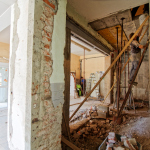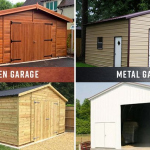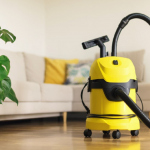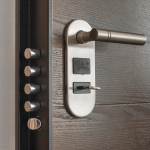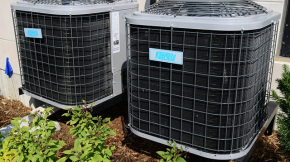How to Make Your Kitchen More Efficient
Share
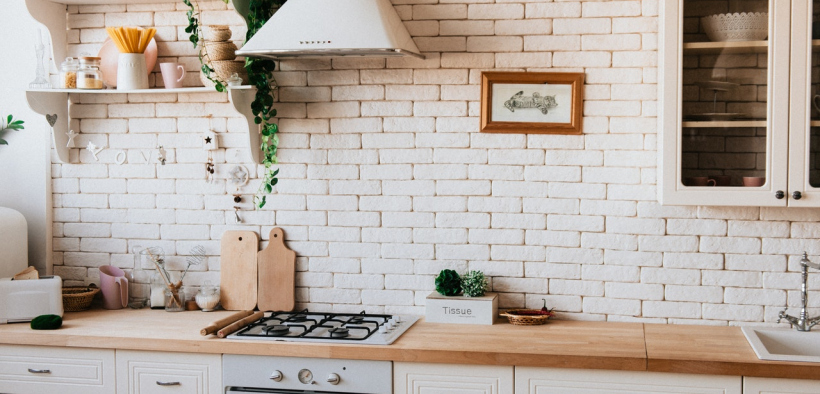
As a chef, there’s nothing worse than having to go for a walk across the kitchen just to fetch the milk while the potatoes, soon to be mashed potatoes, are just sitting there idly.
Well, there are worse things, actually. (Catching fire can be rough. Chopping another of your fingers off can be fairly inconvenient.) But this walking about waste-time business is on a whole other level!
It disrupts the process of making food, and that is an insult no self-respecting chef would be able to let pass.
In this article, we’re going to give you a couple of tips on how you can make your kitchen a more efficient place where you can take to cooking like a duck takes to water!
1) Use Labels on Food Jars
Here’s the thing, if you’ve slept well last night and are ready to do some cooking work, finding that jar with spices won’t be that much of a problem.
Try doing that towards the end of your shift a couple of times and boom! – you’ve put a teaspoon of salt in an otherwise perfect milkshake.
This is a perfect opportunity to start thinking about sticking some name tags on them yonder jars! There’s no shame in it – even the most advanced chefs do it, so come off your rote-spice-rememberin’ high horse, and start writing the names of ingredients on some labels!
2) Create Cooking Stations
This entry is especially important if you don’t have any cooking helpers in the kitchen.
Cooking, as a process, can be split up into three different steps:
- Preparation – washing, cutting, slicing, dicing, etc.
- Cooking – steaming, roasting, poaching, etc.
- Serving – decorating, serving, … and serving, that’s it.
So, to make your cooking more fluid and smooth, make sure to arrange your work environment into cooking stations – each arranged so that you can proceed to the next one without having to go back.
This way, you can save some time preparing food and also make your kitchen tidier and easy to maneuver in at the same time!
3) Install a Solid Ventilation System
As you probably already know, the kitchen is a place where steam and all sorts of other fumes and smells rise into the air. If you don’t have a ventilation system, you’re going to witness all of these slowly paint a colorful painting on your ceiling! The sort of paining only a new paint job will be able to get rid of.
The thing is, you can’t possibly organize a viable kitchen without installing a solid ventilation system, which will export the fumes and the steam away from the kitchen and well outside of it. This will ensure you’re working in a clean and healthy environment, and also save the paint in your kitchen!
4) Use Items That Can Serve Multiple Purposes
Some folks think that the merit of a kitchen is measured in the number of high-tech contraptions it’s equipped with.
This is wrong of course, as the goal of a kitchen is to be efficient, rather than house a myriad of useless contraptions. Therefore, aim to reduce the number of kitchen appliances to the minimum. (This means the functional minimum that will still allow you to use the functions you need in cooking.)
So, you can opt for such machines as blenders, woks (which you can use for a variety of pain-related cooking tasks), and peelers.
5) Arrange Cooking Tools in Groups
Cooking tools have the uncanny talent to get lost among other kitchen appliances to the point where it can be quite difficult to find them at a crucial moment!
To prevent yourself from swearing profusely while pacing around your kitchen looking for the teaspoon, arrange all your kitchen tools and utensils in meaningful groups, so that you always know where they are. For example, stack the plates on top of each other, keep the forks all together in one place, the spoons somewhere else but close, and knives can be… eehm, close to those two but separate, also.
Quite easy, isn’t it! (Okay, you may need a professional organizer for this one.)
6) Rearrange Cooking Appliances
Here we’re talking about those big cooking appliances such as stoves, fridges, and dishwashers.
(Fridges count as cooking-related machines because they keep the food frozen and therefore – possible to work with. Also, you can’t make ice cream without a fridge.)
The goal here is to arrange them in a way where their position relative to each other reflects the cooking process itself. For example, you may want to put the fridge first in line, then the stove, and position the dishwasher last, so you can chuck all the dirty dishes and pans straight in it after you’ve finished cooking!
All things considered, moving the furniture around a bit and ensuring you can pull off a certain workflow in your kitchen is everything you need to make your cooking exploits more efficient. As long as you’re willing to learn and adapt, the improved results in the kitchen won’t be out of reach, either.



